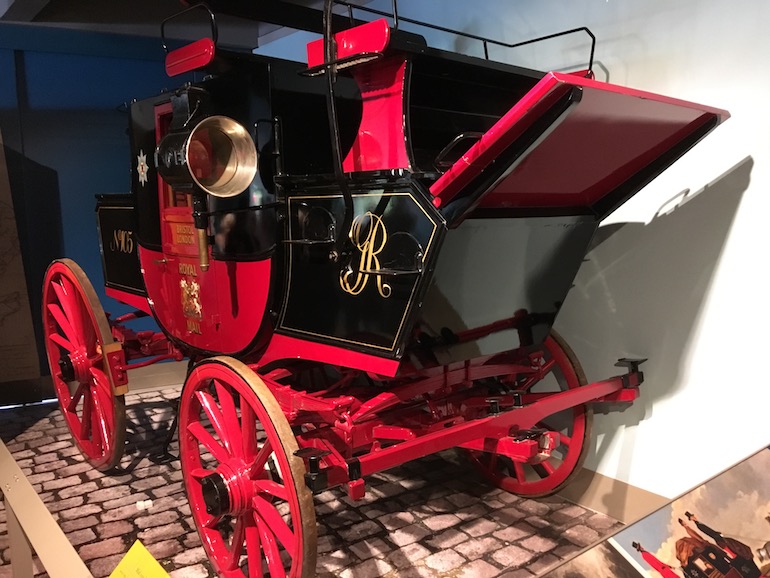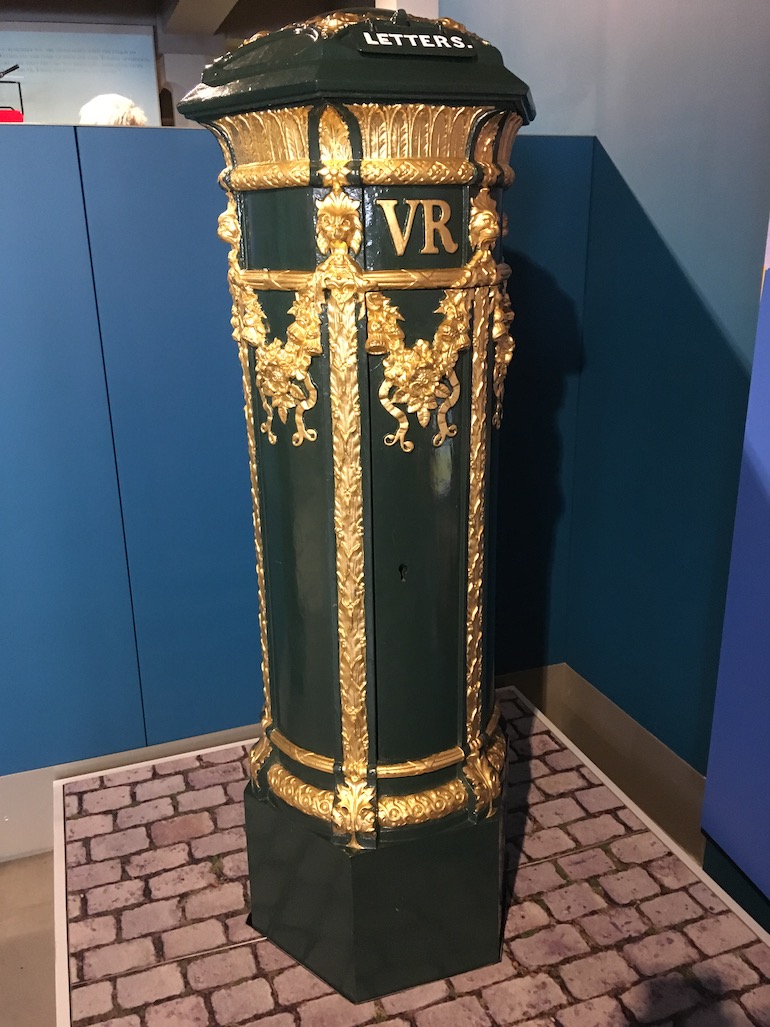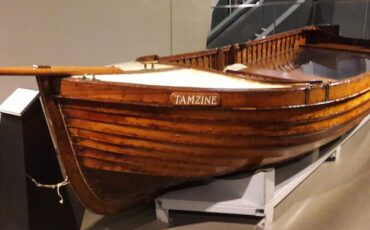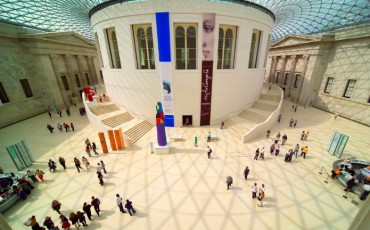The Postal Museum was the only finalist in the 2018 Museum of the Year shortlist to be located in London. Although the postal service has been operating for 500 years, The Postal Museum in London only opened its doors in its present form a year ago in Phoenix Place near the Mount Pleasant sorting office, where modern postal vans can still be seen dispatching mail.
The highlight of a visit to The Postal Museum is a ride on their underground railway. This was developed to move mailbags around the city more quickly than vans, the system remaining in use until fifteen years ago when the increase in email traffic led to its closure. The railway was also used in the Bruce Willis film Hudson Hawk, not his finest hour, as it lost the studio $50 million dollars after its release in 1991. You can see pictures of Willis (who had a full head of hair in those days) and other cast members during the twenty-minute ride.
 The Postal Museum in London: Postal train. Photo Credit: © Edwin Lerner.
The Postal Museum in London: Postal train. Photo Credit: © Edwin Lerner.
There is more to The Postal Museum in London than just the underground railway, however. A full history of the British postal system is on display in the galleries. Mail delivery began in the sixteenth century under King Henry VIII and was extended in the seventeenth century under Charles the First. There was little privacy in those days, however, as the king’s spies had little hesitation in opening letters if they were thought to have treasonous contents.
The major advance in mail delivery came after 1840 when postage stamps were introduced by Rowland Hill. Prior to that, the recipient had to pay for receiving mail and, if it looked to be of little interest, they could refuse to accept it. The first stamps were the famous Penny Blacks with the head of a young Queen Victoria on them. (Larger letters need a two penny blue stamp.) Despite Queen Victoria living to the age of eighty-one, her portrait on the stamp remained that of a young woman. In contrast, the profile of the current Queen has evolved over the years as Her Majesty has grown older.
 The Postal Museum in London: Royal Mail Coach. Photo Credit: © Edwin Lerner.
The Postal Museum in London: Royal Mail Coach. Photo Credit: © Edwin Lerner.
When the late Tony Benn became Postmaster General, he was keen to issue commemorative stamps with more than just the Queen’s head on them. These are now a regular feature and many people collect whole sets of them. The London artist David Gentleman has designed over a hundred stamps for Royal Mail. For a time these stamps did not have the Queen’s head but now they all show a small profile of Her Majesty.
Also on display at The Postal Museum in London are post boxes (originally green until rural residents complained that they were not distinctive enough and they were painted red) and postal vehicles such as a stagecoach. You can see the distinctive scarlet jackets they wore and the pistols they carried to protect them and their packages from robbers on the highway. Also on display at The Postal Museum in London is the Postbus which carried passengers around remote areas as it collected and delivered mail.
 The Postal Museum in London: Original Royal Mail post box. Photo Credit: © Edwin Lerner.
The Postal Museum in London: Original Royal Mail post box. Photo Credit: © Edwin Lerner.
The Postal Museum in London is a delightful museum for those who remember the heyday of ‘snail mail’ and fancy a ride on a unique underground railway under the streets of London.







Leave a Reply